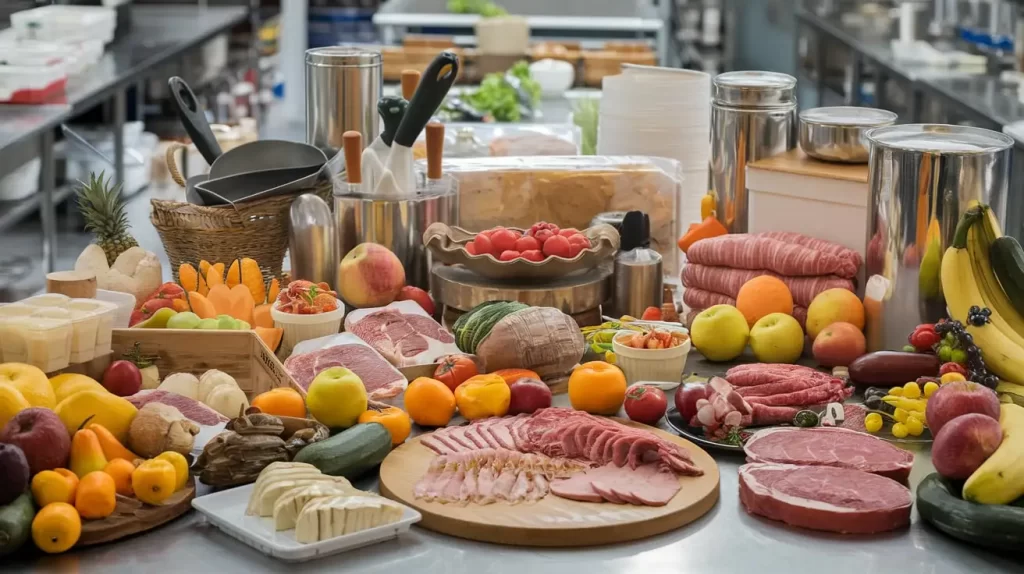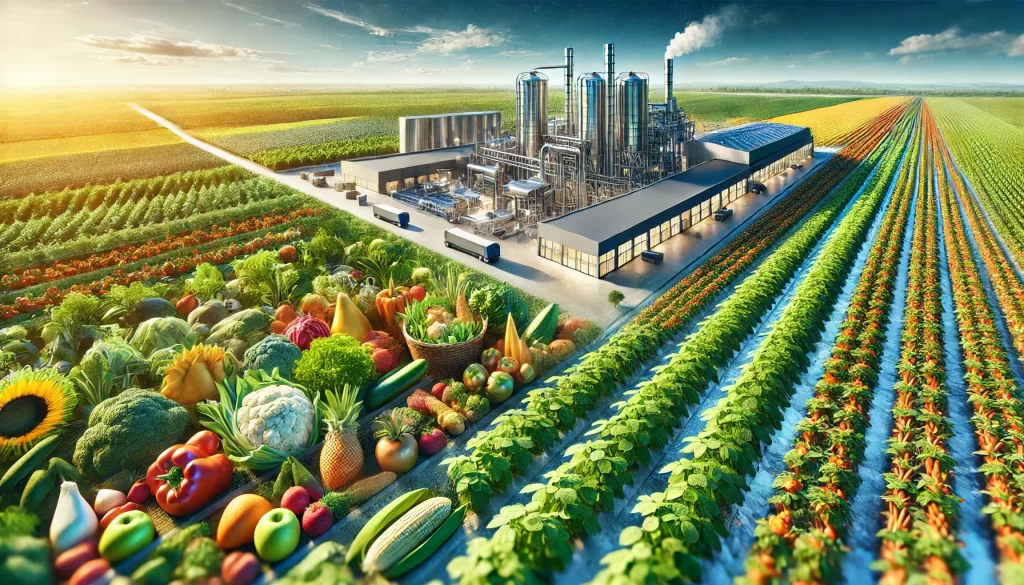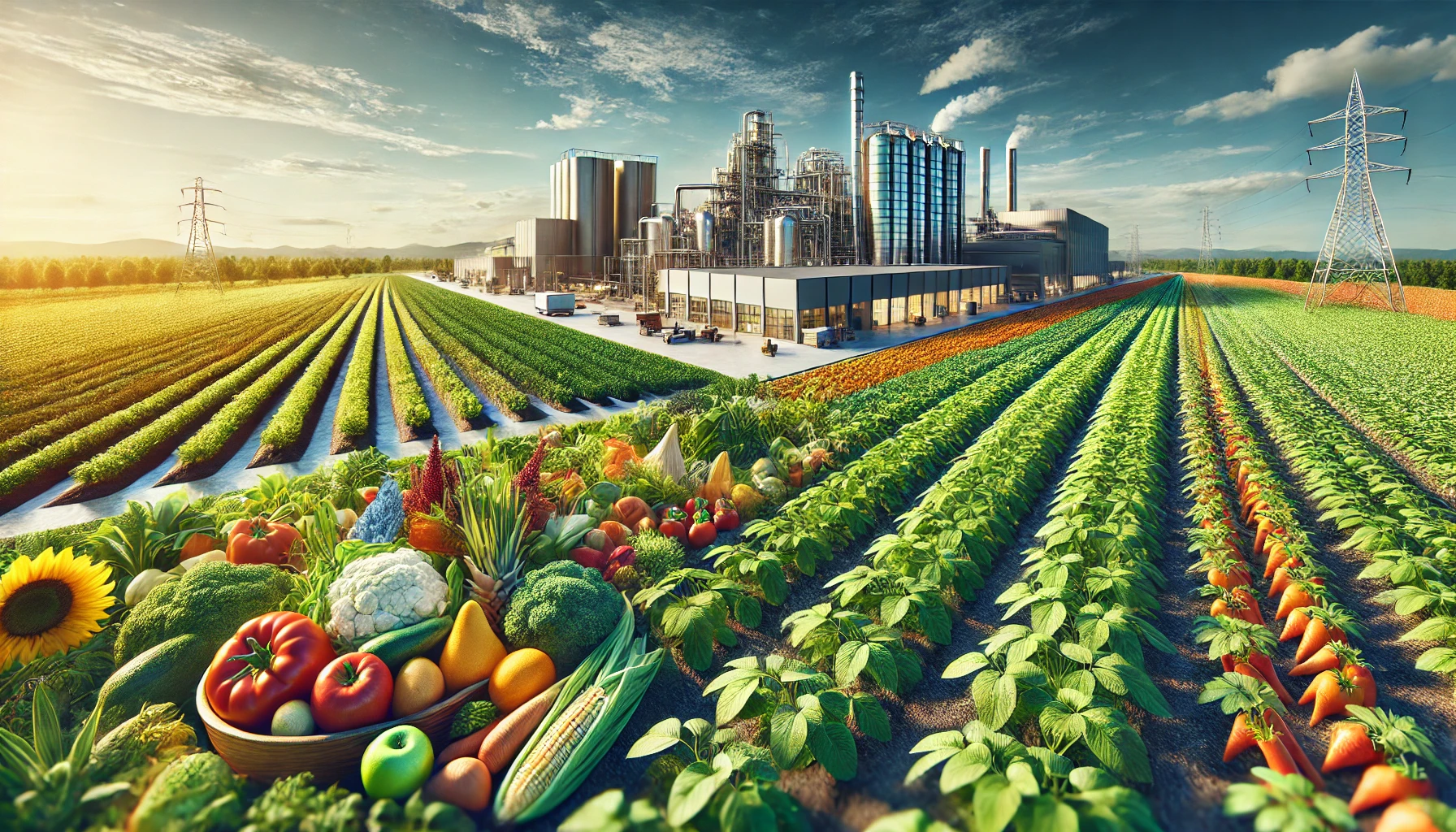Table of Contents
Sectors in Food Industry The food industry is a vast and complex network, often unseen by consumers but crucial to what we eat daily. These different sectors in the food industry are the hidden giants shaping our meals, influencing everything from farm to table. This article will explore these sectors, uncovering how they work together to bring food to your plate and the powerful forces driving them. Understanding these sectors in the food industry can help you make more informed choices about what you eat and appreciate the intricate processes behind your favorite meals.
Sectors in Food Industry The Primary Sector: Agriculture and Raw Materials

Sectors in Food Industry The journey of your food begins with the primary sector, the backbone of the food industry. This sector includes farming, fishing, and livestock. Farmers and producers in this sector grow crops, raise animals, and harvest seafood. They provide the raw materials that other sectors transform into the food you buy at the store.
Sectors in Food Industry Agriculture is a critical part of the primary sector. It includes growing fruits, vegetables, grains, and other crops that form the basis of many food products. Farmers use various techniques, from traditional farming to modern, technology-driven methods, to produce the ingredients we depend on. The fishing industry is another vital component, supplying fresh seafood to meet the high demand in markets worldwide.
Challenges Faced by the Primary Sector
Despite its importance, the primary sector faces numerous challenges. Climate change, for instance, threatens crop yields and the availability of fish. Farmers must also deal with soil degradation, water scarcity, and the increasing demand for sustainable practices. These challenges make producing the raw materials needed to feed the global population more difficult.
Sectors in Food Industry The Secondary Sector: Food Processing and Manufacturing
Once raw materials are harvested, they move to the secondary sector, where food processing and manufacturing occur. This sector transforms raw ingredients into the products you see on grocery store shelves. Food processing involves cleaning, packaging, and preserving raw materials to make them safe and convenient for consumers.
Manufacturing takes this further by turning these processed materials into final products. For example, wheat from the primary sector is processed into flour and then manufactured into bread, pasta, and other products. This sector is where innovation thrives, with companies constantly developing new foods and improving existing ones to meet consumer demands.
Innovation in Food Processing and Manufacturing
Sectors in Food Industry The secondary sector is a hub of innovation. Food companies continually look for ways to improve their products, make them healthier, and reduce their environmental impact. For instance, consumer demand for more nutritious and sustainable options has driven a growing trend toward plant-based foods.
Food manufacturers are also exploring new technologies, such as artificial intelligence and automation, to increase efficiency and reduce costs. These innovations are helping to shape the future of the food industry, making it more adaptable to changing consumer preferences and global challenges.
The Tertiary Sector: Distribution and Retail

After food is processed and manufactured, it moves into the tertiary sector, where distribution and retail come into play. This sector involves transporting, marketing, and selling food products to consumers. The best food products would never reach your table without the tertiary sector.
Sectors in the Food Industry include distribution, from trucking companies that move food across the country to warehouses that store products until they are needed in stores. Consumers purchase food at retailers such as grocery stores, supermarkets, and online platforms. These retailers are the final link in the food supply chain, making accessing various food products easy.
Trends in Food Distribution and Retail
Sectors in the Food Industry The distribution and retail sector is constantly evolving to meet consumers’ needs. One of the most significant trends in recent years has been the rise of online grocery shopping. More people are buying their food online, a shift accelerated by the COVID-19 pandemic. This trend has led to changes in how food is distributed, with companies investing in logistics and technology to meet the demand for fast and reliable delivery.
The Quaternary Sector: Research and Development in Food Innovation
The quaternary sector might be less visible to consumers, but it plays a crucial role in the food industry. This sector focuses on research, development, and technology, driving food production, processing, and distribution innovation. Scientists, researchers, and technologists in this sector work on developing new food products, improving existing ones, and finding more sustainable ways to produce and deliver food.
Also Read: How Much Does DocuSign Cost? Discover the Shocking Hidden Fees!
The Impact of R&D on the Future of Food
Sectors in Food Industry The work done in the quaternary sector is shaping the future of the food industry. As consumer preferences shift towards healthier and more sustainable food, R&D teams focus on creating products that meet these demands. This includes everything from developing new plant-based proteins to improving the nutritional content of processed foods.
Sectors in the food industry The food industry is a complex network of sectors that bring food to your table. Each sector plays a critical role, from the primary sector, where raw materials are produced, to the quaternary sector, where innovation and research drive the future. By understanding these sectors in the food industry, you can better appreciate the effort and expertise required to produce the food you eat every day.
Sectors in Food Industry These hidden giants shaping your meals are essential to our daily lives, ensuring we have access to a wide variety of safe, nutritious, and enjoyable food. As the food industry continues to evolve, staying informed about these sectors will help you make more informed choices and understand the broader impact of your food on the world.




